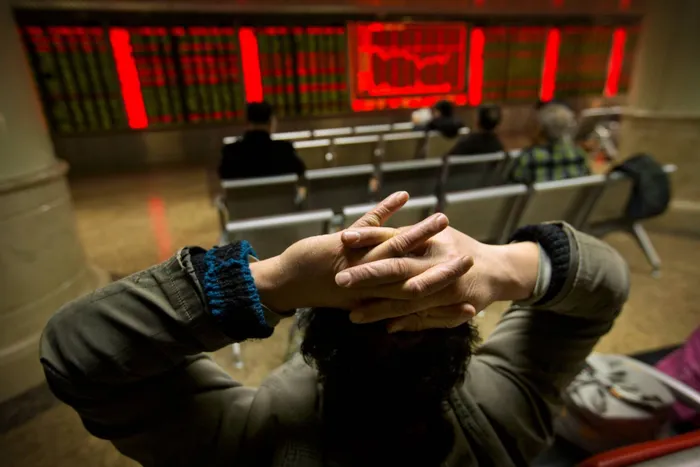World stocks hold near 16-month highs

File image File image
London - World stocks were set for a weekly
gain and held near 16-month highs on Friday, while the euro
steadied after swings following the European Central Bank's
decision to extend its stimulus programme.
The MSCI World index was up 0.1 percent, on track
for a gain of 2.7 percent for the week. The index was just 0.1
percent below Thursday's peak, which was its highest level since
August 2015.
European shares hit their highest level for 11 months, and
were set for their best week since February, following the ECB's
decision to trim the size of its asset purchase program while
also extending it for longer than many analysts had expected.
The ECB said it would reduce its monthly asset buys to 60
billion euros ($63.68 billion) as of April, from the current 80
billion euros, and extend purchases to December from March -
three months longer than what some analysts had forecast.
That dragged down two-year yields across Europe and sharply
steepened the yield curve, a gift for banks that typically
borrow short maturities and lend long.
European bank stocks pulled back on Friday, dropping
1 percent, but were still up 9.2 percent for the week, with the
sector set for its biggest weekly rise since December 2011.
One month on from November's U.S. presidential election,
world stocks have gained 3.8 percent, with Wall Street spurred
to all time highs on hopes of higher growth and inflation as a
result of President-elect Donald Trump's planned fiscal
stimulus.
Analysts said that signs the ECB would continue to provide
monetary support for as long as needed complemented the promise
of fiscal stimulus in a welcome cocktail for investors.
"Markets already excited by the prospect of a fiscal
stimulus wave via a Trump election look in-line to get more of
both fiscal and monetary stimulus from next year," said Mike van
Dulken, head of research at Accendo Markets.
"(That's) the best of both worlds for investors."
In all, Europe's STOXX 600 was up 0.1 percent.
The euro recovered a foothold on Friday, after an extension
of the European Central Bank's programme of money-printing till
the end of next year drove its biggest daily loss against the
dollar since Britain's vote to leave the European Union in June.
It was flat against the dollar, spiking as high
$1.0875 on Thursday before tumbling as ECB President Mario
Draghi said the unexpected move was not an outright winding-down
of the central bank's quantitative easing (QE) program, and the
central bank reserved the right to increase the size of
purchases again if the euro zone economy falters.
The dovish tone of the ECB also saw a fall in euro zone
borrowing costs, led by Southern Europe.
The ECB's bond purchase changes came less than a week before
the Federal Reserve's policy meeting next Tuesday and Wednesday.
Interest rate futures, implied traders saw a
98 percent chance the U.S. central bank would raise interest
rates by a quarter point next week, and about a 50 percent
chance it would raise rates by at least another quarter point by
June 2017, according to CME Group's FedWatch program.
The dollar index, which tracks the greenback against a
basket of six major rival currencies, was steady on the day at
101.13, up 0.4 percent for the week.
The dollar was up 0.4 percent at 114.42 yen, moving
back toward last week's 10-month high of 114.83 yen.
Asian shares edged down on Friday but were on track for
weekly gains. MSCI's broadest index of Asia-Pacific shares
outside Japan dipped 0.2 percent, and was poised
for a weekly gain of 2 percent.
Japan's Nikkei stock index ended 1.2 percent up at
its highest closing level since December 2015. The Nikkei
earlier topped the 19,000-level for the first time in a year, as
investors saw both the weak yen and prospects of U.S.
President-elect Donald Trump adopting reflationary policies
benefiting Japan's major exporters.
"The US market's strength is giving a boost to Japanese
shares," said Eiji Kinouchi, chief technical analyst at Daiwa
Securities.
Oil built on its gains after rebounding overnight on growing
optimism that non-OPEC producers might follow the cartel's lead
by agreeing to cut output.
US crude added 0.9 percent to $51.31 a barrel.
Brent crude rose 0.7 percent to $54.24.
Spot gold was flat at $1,170.4 an ounce and was set
for a weekly decline of about 0.5 percent, pressured by the
stronger US dollar and expectations that the Fed will raise
interest rates next week.